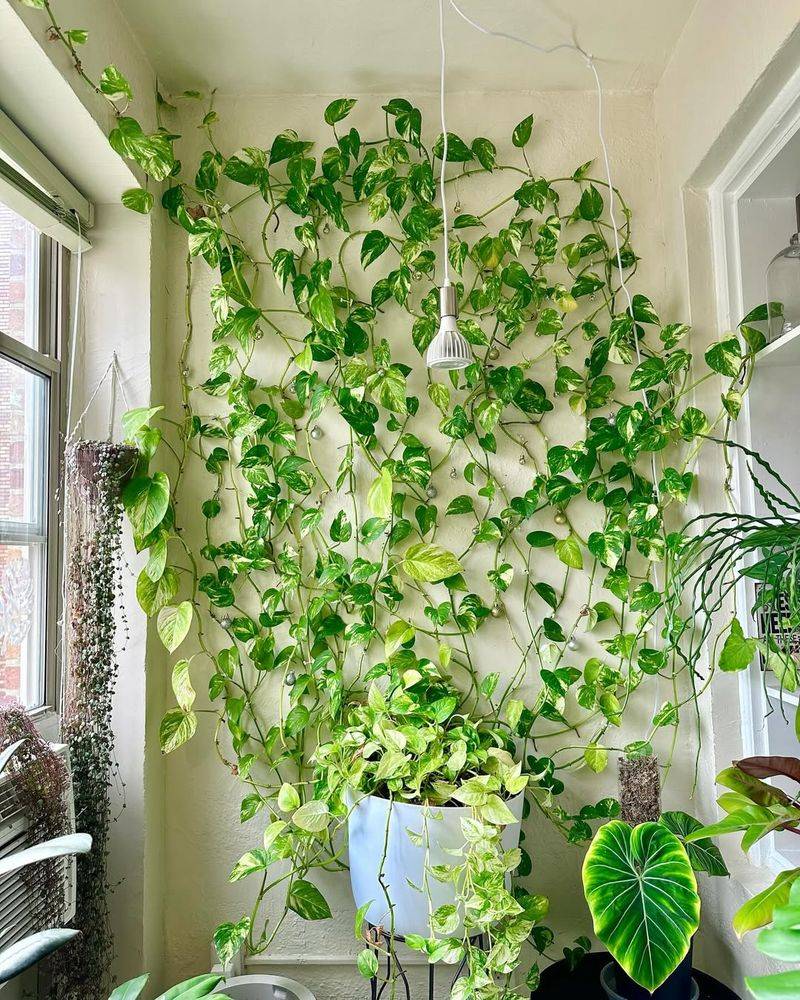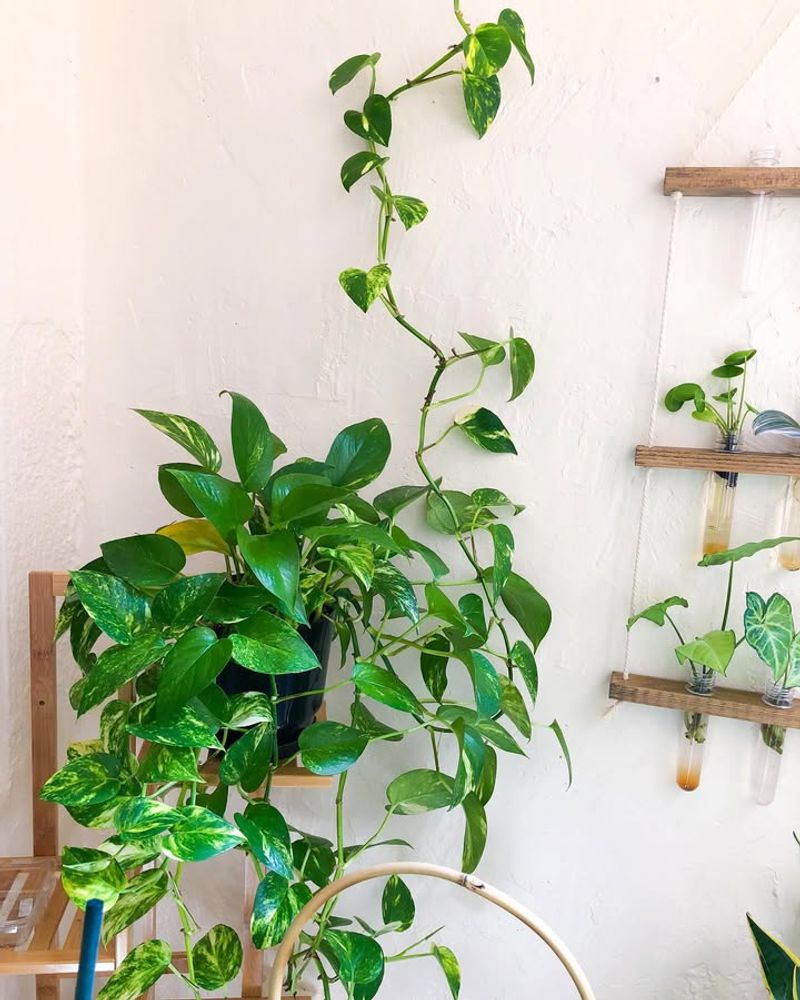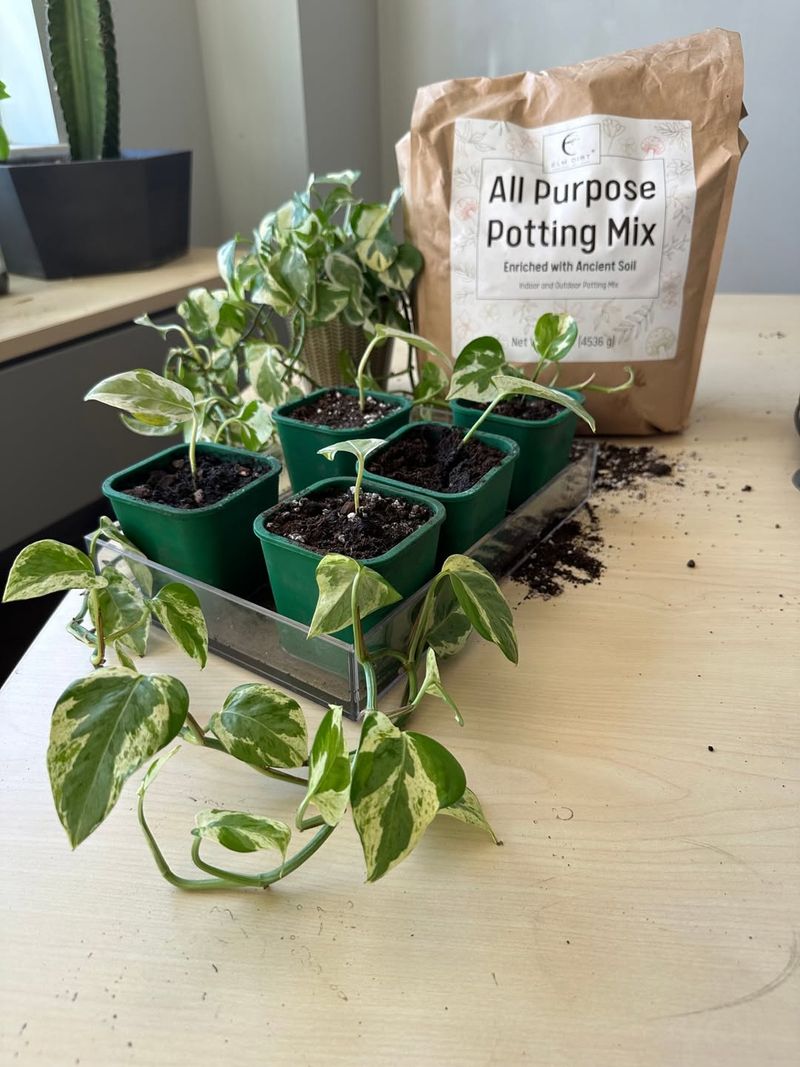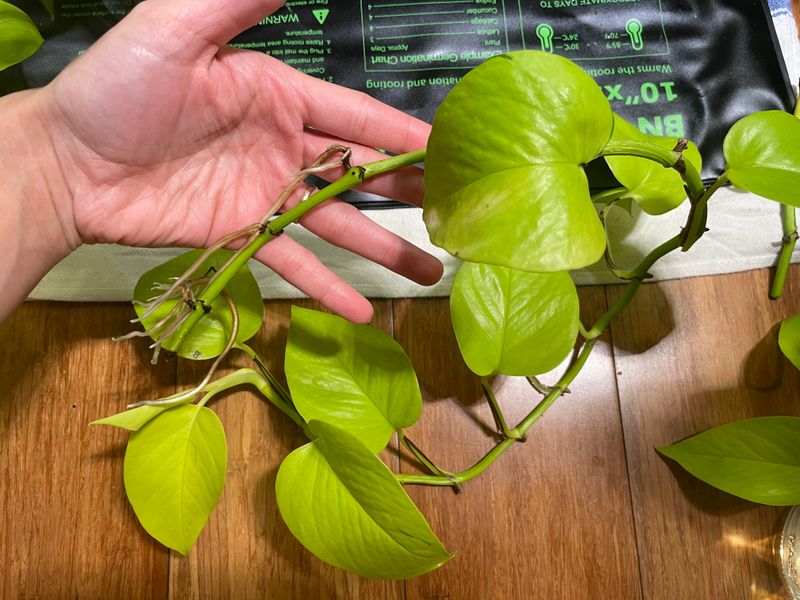Florida winters may not be bone-chilling, but they still pack enough surprises to leave your pothos feeling a bit under the weather. The good news? You don’t need a green thumb made of gold to keep it thriving.
A few tried-and-true habits can help your plant stay in the driver’s seat—lush, lively, and ready to take whatever Mother Nature tosses its way.
1. Adjust Your Watering Schedule For Cooler Weather
Winter means your pothos won’t gulp down water as quickly as it does in summer. Cooler temperatures slow down plant growth, so roots absorb moisture at a gentler pace.
Check the top two inches of soil before watering—if it feels dry, your plant is ready for a drink. Overwatering during Florida winter can lead to root rot, which is tough to reverse.
Pay attention to how heavy the pot feels too. A lighter pot usually signals it’s time to water again.
2. Move Your Plant To Brighter Spots
Shorter winter days mean less natural light reaches your pothos, even in sunny Florida. Your plant might stretch toward windows or lose some of its vibrant color without enough brightness.
Relocate your pothos closer to east or west-facing windows where indirect sunlight is plentiful. Avoid harsh afternoon rays that could scorch the leaves.
Rotating the pot every week or so helps all sides grow evenly and prevents lopsided vines.
3. Watch Out For Cold Drafts Near Doors
Pothos plants are tropical by nature and don’t appreciate sudden cold blasts. Doorways, especially those opening to patios or garages, can expose your plant to chilly air when people come and go.
Cold drafts stress the plant and may cause yellowing leaves or stunted growth. Find a cozy corner away from high-traffic entryways where temperatures stay consistent.
Hallways and living rooms usually offer more stable conditions than spots near exterior doors.
4. Boost Humidity When Heaters Run
Central heating systems can dry out indoor air, even in Florida’s relatively humid climate. Your pothos loves moisture in the air, and dry conditions may cause brown leaf tips or slow growth.
Placing a small humidifier nearby works wonders for keeping foliage fresh and green. You can also group plants together to create a mini humid microclimate.
Misting leaves occasionally helps too, though it’s not a substitute for consistent humidity levels.
5. Reduce Fertilizer Applications During Rest Period
Growth slows down significantly when winter arrives in Florida, meaning your pothos doesn’t need as much food. Continuing your regular fertilizing schedule can actually harm the plant by causing salt buildup in the soil.
Cut back to feeding once every six to eight weeks, or pause completely until spring returns. Use a diluted liquid fertilizer at half strength when you do feed.
Your plant will thank you by staying healthy without unnecessary chemical stress.
6. Prune Leggy Vines To Encourage Fullness
Lower light levels in winter often cause pothos to grow long, sparse vines with fewer leaves. Pruning helps redirect energy into producing bushier, more attractive growth instead of stretched-out stems.
Snip just above a leaf node using clean scissors, and don’t worry—your plant will bounce back stronger. You can even root those cuttings in water for new plants.
Winter pruning sets the stage for lush spring growth when conditions improve.
7. Check For Pests That Love Dry Indoor Air
Spider mites and mealybugs thrive when indoor air gets dry during winter months in Florida. Infestations can sneak up quickly, leaving sticky residue or tiny webs on your pothos leaves.
Inspect your plant weekly, paying special attention to undersides of leaves and stem joints. Wiping leaves with a damp cloth removes dust and helps you spot problems early.
Catching pests before they multiply saves you headaches and keeps your plant looking its best.
8. Avoid Repotting Until Spring Arrives
Winter is nap time for pothos, making it the worst season to disturb roots with repotting. Transplanting during dormancy stresses the plant and increases the risk of shock or disease.
Wait until temperatures warm and growth picks up again in spring. Your pothos will adapt much faster to a new pot when it’s actively growing.
Patience now means a healthier, happier plant that establishes quickly in fresh soil later on.









